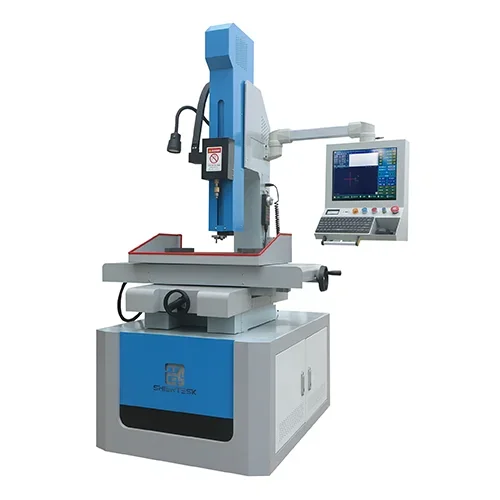The Key Features and Benefits of CNC Punching Machines
CNC (Computer Numerical Control) punching machines have revolutionized the manufacturing industry by offering precision, efficiency, and versatility in sheet metal processing. These machines automate the punching process, enabling the creation of intricate designs and shapes with minimal waste. This article delves into the key features and benefits of CNC punching machines, highlighting their significance in modern manufacturing.
Understanding CNC Punching Machines
CNC punching machines utilize a computer-controlled mechanism to punch holes and shapes into sheet metal. The process begins with a digital design, typically created in CAD (Computer-Aided Design) software, which is then translated into machine instructions. The CNC system controls the movement of the sheet metal and the punching tool to ensure accuracy and repeatability.

Types of CNC Punching Machines
Turret Punching Machines: These machines feature a rotating turret that holds multiple tools, allowing for quick tool changes and increased productivity.
Servo Presses: Utilizing servo motors for precise control, these machines offer enhanced speed and energy efficiency.
Hydraulic Presses: Known for their power, hydraulic presses use fluid pressure to operate, making them suitable for thicker materials.
Mechanical Presses: These traditional machines convert rotational motion into vertical motion through a crank mechanism.

Benefits of CNC Punching Machines
Increased Production Speed
CNC punching machines operate at high speeds compared to manual methods. Automation allows for continuous operation without fatigue, leading to higher output rates and shorter lead times.
Cost-Effectiveness
While the initial investment in CNC technology may be significant, the long-term savings are substantial. Reduced labor costs due to automation, along with lower material waste, contribute to overall cost-effectiveness in production.
Flexibility in Design Changes
In dynamic manufacturing environments where design specifications frequently change, CNC punching machines offer unparalleled flexibility. Adjustments can be made quickly through software updates without the need for extensive retooling.
Streamlined Workflow
The integration of CNC technology allows for seamless communication between design software and machinery. This streamlined workflow enhances productivity by reducing the time spent on setup and adjustments.
High-Quality Output
The controlled environment of CNC punching ensures consistent quality across all produced parts. This reliability is critical for industries that require high standards of performance and durability.
Prototyping Capabilities
CNC punching machines are ideal for rapid prototyping due to their ability to execute design changes swiftly. Manufacturers can quickly produce prototypes for testing before committing to full production runs.

Applications of CNC Punching Machines
CNC punching machines find applications across various industries:
Automotive: Used for creating components such as brackets, panels, and frames.
Aerospace: Essential for producing lightweight yet strong parts critical for airc
raft performance.
Electronics: Employed in the fabrication of enclosures and housings for electronic devices.
Construction: Utilized for creating structural components like beams and columns.
HVAC: Used in manufacturing ductwork and ventilation components.

Conclusion
CNC punching machines represent a significant advancement in manufacturing technology, offering numerous features and benefits that enhance productivity and efficiency while reducing costs and waste. Their precision, versatility, and ability to adapt to changing designs make them indispensable tools in modern production environments.
As industries continue to evolve towards more automated processes, the role of CNC punching machines will only grow more critical. Manufacturers looking to remain competitive must consider investing in these advanced systems to leverage their full potential in optimizing production workflows.
Streamlining Wire Cutting Operations with Medium Wire Cutting Machines
- Art
- Causes
- Crafts
- Dance
- Drinks
- Film
- Fitness
- Food
- Games
- Gardening
- Health
- Home
- Literature
- Music
- Networking
- Other
- Party
- Religion
- Shopping
- Sports
- Theater
- Wellness


